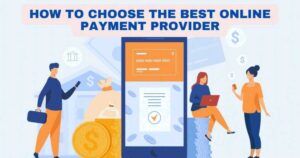Canada is a land of diverse climates, where weather conditions can vary greatly from region to region. From the chilly winters in the north to the hot summers in the south, understanding Canadian weather is essential for residents and visitors alike. In this ultimate guide, we will explore what to expect in each season throughout Canada. So, let’s delve into the fascinating world of Canadian weather and discover how it changes throughout the year.
Understanding Canadian weather is crucial for navigating the diverse climate in each season. From the freezing winters to the hot summers, and the transitional periods of spring and fall, Canadian weather offers a range of experiences across the country. By being aware of regional variations, seasonal patterns, and potential weather hazards, individuals can better prepare for and appreciate the unique weather conditions in Canada.
Seasons in Canada
- Spring (March to May) is a transitional season characterized by melting snow, blooming flowers, and rising temperatures. It can be a mix of cool and warm weather, with occasional rainfall.
- Summer (June to August) is generally warm to hot across the country, with longer daylight hours. The temperatures vary from mild in coastal areas to hot and humid in central and eastern regions. Northern areas have shorter summers with cooler temperatures.
- Fall (September to November) is marked by vibrant foliage as leaves change colors. The temperatures start to cool down, and days become shorter. It can range from mild to cool, with some regions experiencing early snowfall in November.
- Winter (December to February) is characterized by cold temperatures and snowfall in most parts of Canada. The severity of winter varies across the country, with the northern regions experiencing freezing conditions and heavy snowfall. Coastal areas may have milder winters with more rainfall.
Winter Weather in Canada
Canadian winters are notorious for their cold temperatures and heavy snowfall. In this section, we will explore the characteristics of winter weather across different regions of Canada. From the frigid temperatures of the Arctic to the milder winters on the West Coast, we will delve into the various winter weather phenomena that Canadians experience. Topics covered may include average winter temperatures, snowfall amounts, winter storms, and tips for staying safe and prepared during winter.
Spring Weather in Canada
As winter gives way to spring, Canadians eagerly await the arrival of milder weather and blossoming landscapes. This section will cover the transitional period between winter and summer, highlighting the unique weather patterns that mark spring in different parts of the country. From unpredictable temperature fluctuations to the potential for rain and snow, we will uncover what Canadians can expect during this time. Topics covered may include the arrival of spring, temperature variations, precipitation patterns, and the impact of spring weather on agriculture and outdoor activities.
Summer Weather in Canada
Summers in Canada bring a diverse range of weather conditions, from scorching heatwaves to cool coastal breezes. This section will explore the characteristics of Canadian summers, including regional variations in temperatures, the influence of bodies of water, and the potential for severe weather events like thunderstorms and tornadoes. We will also highlight popular summer destinations and the unique weather experiences they offer. Topics covered may include average summer temperatures, humidity levels, popular summer activities, and safety tips for enjoying summer.
Fall Weather in Canada
As summer fades away, autumn paints the landscape with vibrant hues and crisp temperatures. This section will focus on fall in Canada, discussing the changing foliage, cooler temperatures, and the potential for frost and early snowfall in certain regions. We will explore the beauty of fall foliage and the unique weather phenomena that accompany this season. Topics covered may include temperature changes, fall foliage viewing, harvest season, and the impact of fall weather on wildlife.
Canadian Weather Overview
Canada’s vast geographical expanse results in a wide range of weather patterns. Factors such as latitude, elevation, proximity to water bodies, and air masses contribute to the unique weather conditions across the country. The Canadian Meteorological Service plays a vital role in weather forecasting and monitoring, providing valuable insights into Canadian weather systems.
Canadian weather is as diverse as the country itself, with a wide range of climatic conditions that vary from region to region. Being the second-largest country in the world by land area, Canada experiences a variety of weather patterns due to its vast size and geographical features.
- Western Canada: The western provinces, including British Columbia and Alberta, are known for their mild and temperate coastal climate. Summers are usually warm and pleasant, with moderate rainfall. Winters tend to be mild along the coast, but the interior regions experience colder temperatures and heavier snowfall, especially in the mountainous areas.
- Prairies: The Prairie provinces, such as Saskatchewan and Manitoba, have a semi-arid to humid continental climate. Summers are warm and can be quite hot, with occasional thunderstorms. Winters are generally cold, with temperatures dropping below freezing and significant snowfall. The flat terrain of the prairies allows for strong winds to sweep across the region.
- Ontario and Quebec: The provinces of Ontario and Quebec have a humid continental climate, characterized by hot, humid summers and cold winters. Summers can be muggy, with occasional heatwaves, while winters are cold and snowy, particularly in the northern regions. These provinces often experience significant fluctuations in temperature throughout the year.
- Atlantic Canada: The Atlantic provinces, including New Brunswick, Nova Scotia, Prince Edward Island, and Newfoundland and Labrador, have a maritime climate influenced by the Atlantic Ocean. Summers are generally mild and pleasant, while winters are relatively mild along the coast but colder inland. The region experiences significant precipitation, including rain, snow, and fog.
- Northern Canada: The northern territories of Yukon, Northwest Territories, and Nunavut have a subarctic and Arctic climate. Summers are short and cool, with temperatures rarely exceeding 20 °C (68 °F). Winters are freezing, with long periods of darkness and temperatures dropping well below freezing. Snowfall is abundant, and blizzards are not uncommon.
It’s important to note that Canadian weather can be highly unpredictable, with rapid changes in temperature and weather conditions occurring throughout the year. Additionally, certain regions are prone to specific weather phenomena, such as tornadoes in the prairies or coastal storms in Atlantic Canada.
Canadian Temperatures
Canadian temperatures vary widely across the country due to its vast size and diverse geography. The temperature range experienced in Canada is influenced by factors such as latitude, proximity to bodies of water, elevation, and prevailing winds. Let’s explore Canadian temperatures in different regions:
- Western Canada: In the western provinces, including British Columbia and Alberta, temperatures can vary significantly depending on the specific location. Coastal areas benefit from the moderating influence of the Pacific Ocean, resulting in milder temperatures compared to inland regions. Summers are generally warm, with average highs ranging from 20°C to 30°C (68°F to 86°F), while winters tend to be mild along the coast but colder in the interior, with temperatures ranging from 0°C to -10°C (32°F to 14°F).
- Prairies: The Prairie provinces, such as Saskatchewan and Manitoba, have a continental climate characterized by hot summers and cold winters. Summers can be quite hot, with average temperatures ranging from 25°C to 30°C (77°F to 86°F) and occasionally exceeding 35°C (95°F). Winters are cold, with average temperatures ranging from -15°C to -25°C (5°F to -13°F) but can drop even lower, especially during cold snaps.
- Ontario and Quebec: Ontario and Quebec have a mix of climate zones, with southern regions experiencing a humid continental climate, while northern parts have a subarctic climate. Summers in southern Ontario and Quebec are warm and humid, with average temperatures ranging from 25°C to 30°C (77°F to 86°F). Winters are cold, with average temperatures ranging from -5°C to -15°C (23°F to 5°F), but can drop even lower during cold spells. Northern regions have colder winters, with average temperatures ranging from -20°C to -30°C (-4°F to -22°F).
- Atlantic Canada: The Atlantic provinces, including New Brunswick, Nova Scotia, Prince Edward Island, and Newfoundland and Labrador, have a maritime climate influenced by the Atlantic Ocean. Summers are generally mild and pleasant, with average temperatures ranging from 20°C to 25°C (68°F to 77°F). Winters are relatively mild along the coast, with average temperatures ranging from -5°C to 0°C (23°F to 32°F). However, inland and northern regions can experience colder temperatures, with averages dropping to -10°C to -15°C (14°F to 5°F).
- Northern Canada: The northern territories of Yukon, Northwest Territories, and Nunavut have a subarctic and Arctic climate. Summers are short and cool, with average temperatures ranging from 10°C to 20°C (50°F to 68°F) in the southern regions. Farther north, temperatures can be colder, with averages around 5°C to 10°C (41°F to 50°F). Winters are icy, with average temperatures ranging from -25°C to -40°C (-13°F to -40°F) or even lower in the northernmost areas.
Canadian Summer Temperatures
Canadian summer temperatures vary across the country, offering a range of climates and experiences for residents and visitors alike. The summer season in Canada generally spans from June to August, but the specific timing and temperatures can differ from region to region. Here is an overview of Canadian summer temperatures:
Canadian summer temperatures are influenced by several factors, including latitude, proximity to bodies of water, elevation, and prevailing winds. As a result, temperatures can vary significantly from coast to coast.
In general, southern parts of Canada experience warmer summers, with average daytime temperatures ranging from 20°C to 30°C (68°F to 86°F). These regions include southern Ontario, southern Quebec, and parts of the prairie provinces.
In the northern regions, particularly in northern Ontario, northern Quebec, and the northern territories, summers tend to be cooler. Average daytime temperatures in these areas range from 10°C to 20°C (50°F to 68°F).
Coastal areas, such as those along the Atlantic and Pacific coasts, generally have more moderate summer temperatures due to the influence of nearby bodies of water. Temperatures in these regions range from 15°C to 25°C (59°F to 77°F) on average.
It’s important to note that these are average temperatures, and actual temperatures can vary from year to year and even from day to day. Heatwaves, which are periods of unusually hot weather, can occur in various parts of Canada, leading to higher temperatures than the averages mentioned above.
Canadian summers also bring opportunities for outdoor activities and enjoyment of the country’s natural beauty. Many Canadians and visitors take advantage of the warmer temperatures to engage in recreational activities such as hiking, camping, swimming, and enjoying beaches and parks.
Canadian Weather Radar & Services
Canadian weather radar is an essential tool used by meteorologists to track and monitor weather patterns across the country. It provides real-time information about precipitation, storm activity, and the movement of weather systems, enabling forecasters to make accurate predictions and issue timely warnings to the public.
Weather radar works on the principle of sending out radio waves and measuring their reflections when they encounter objects such as raindrops, snowflakes, or even airborne debris. These reflections, or echoes, are then processed to create a visual representation of the weather conditions in a particular area.
In Canada, the weather radar network is operated by Environment and Climate Change Canada (ECCC), the government agency responsible for weather forecasting and monitoring. The ECCC maintains a network of weather radar stations strategically located across the country to provide comprehensive coverage.
Each radar station consists of a large dish antenna that rotates 360 degrees, emitting radio waves at specific intervals. As the waves encounter precipitation or other objects, they bounce back to the radar antenna, where they are detected and analyzed. The radar system measures the time it takes for the waves to return, which helps determine the distance to the objects and their intensity.
The data collected by the radar is then processed to generate images and animations that display the location, intensity, and movement of precipitation. This information is invaluable for meteorologists in identifying severe weather conditions such as thunderstorms, heavy rainfall, snowfall, or even potential tornadoes.
Weather radar is particularly useful for tracking severe weather events in real-time. It helps meteorologists identify the formation and movement of storm cells, assess their strength, and issue appropriate warnings to the public. These warnings can include severe thunderstorm alerts, tornado watches or warnings, and heavy rainfall advisories.
The Canadian weather radar network plays a crucial role in providing accurate and timely weather information, aiding in the protection of life and property. It allows meteorologists to monitor and analyze weather patterns across the country and make informed forecasts. Additionally, the radar data is often shared with the public through various media channels, enabling individuals to stay informed about current and approaching weather conditions.
While weather radar is a powerful tool, it is important to note that it has its limitations. For instance, it can have difficulty detecting certain types of precipitation accurately, such as freezing rain or drizzle. Radar beams can also be blocked or weakened by geographical features like mountains, resulting in areas of reduced coverage.
FAQs – Canadian Weather
How is the weather in Canada all year-round?
Canada experiences a wide range of weather conditions throughout the year due to its vast size and diverse geography. The weather can vary significantly from region to region. Coastal areas benefit from the moderating influence of oceans, resulting in milder temperatures and more moderate weather patterns. Inland and northern regions tend to have more extreme temperature ranges and harsher weather conditions.
Does Canada have 4 seasons?
Yes, Canada generally experiences four distinct seasons: spring, summer, fall, and winter. Each season brings its own unique weather characteristics and changes in temperature, precipitation, and daylight hours. The duration and severity of each season can vary across different parts of the country.
Is it hot in Canada or cold?
Canada has both hot and cold weather, depending on the season and region. Summers in Canada can be hot, especially in southern and central regions, with temperatures ranging from mild to very warm, often exceeding 30°C (86°F). Winters, particularly in northern and prairie regions, can be freezing, with temperatures dropping well below freezing, even reaching -40°C (-40°F) in some areas.
What is the coldest month of the year in Canada?
The coldest month of the year in Canada varies depending on the region. Generally, the coldest temperatures are experienced in January or February. Northern and interior regions tend to have the coldest winters, with temperatures staying consistently low during these months.
What is the hottest month in Canada?
The hottest month in Canada also varies by region. In many parts of the country, July tends to be the warmest month, with temperatures reaching their peak during summer. However, coastal areas influenced by ocean currents may experience their warmest temperatures in August.
Does it snow a lot in Toronto?
Toronto experiences snowy winters, but the amount of snowfall can vary from year to year. On average, Toronto receives around 133 centimeters (52 inches) of snowfall per year. Snowstorms are not uncommon, especially during the winter months, and can sometimes lead to significant accumulations.
Is it expensive to live in Toronto?
Toronto is considered one of the more expensive cities to live in Canada. The cost of living, including housing, transportation, and everyday expenses, tends to be higher compared to other Canadian cities. Housing prices, in particular, can be quite high, especially in desirable neighborhoods. However, the cost of living can vary depending on individual circumstances and lifestyle choices.
What is the coldest city in Canada?
The coldest city in Canada is often considered to be Yellowknife, the capital of Canada’s Northwest Territories. With its subarctic climate, Yellowknife experiences extremely cold winters, with average temperatures well below freezing. Other cities in northern Canada, such as Whitehorse in Yukon and Iqaluit in Nunavut, also have frigid winter temperatures.
What is the hottest month in Toronto?
The hottest month in Toronto is typically July. During this time, temperatures can reach their peak, with average highs around 26°C to 28°C (79°F to 82°F). However, heatwaves can occur, pushing temperatures above 30°C (86°F) for several days or longer.
Does Vancouver get a lot of rain?
Vancouver is known for its relatively high amount of rainfall compared to other Canadian cities. It experiences a mild, temperate climate with significant precipitation throughout the year. The city receives an average of around 1,150 millimeters (45 inches) of rain annually. The rainy season typically occurs from late fall to early spring, while summers are drier with less rainfall.
What is the warmest province in Canada?
The warmest province in Canada is generally considered to be British Columbia. Its coastal regions, such as Vancouver Island and the Lower Mainland, benefit from a moderate climate influenced by the Pacific Ocean. These areas experience milder winters and enjoy relatively warm summers compared to other provinces in Canada.
How long does the summer season last in Canada?
The duration of the summer season in Canada varies depending on the region. In general, summer lasts from June to August, but the timing can differ slightly. In more northern regions, such as parts of Yukon and Northwest Territories, summer can be shorter, while southern regions may experience a longer summer season.
Is Canada a good place to see fall foliage?
Yes, Canada is renowned for its vibrant fall foliage, attracting visitors from around the world. The country’s diverse landscapes, including forests, mountains, and national parks, offer spectacular displays of autumn colors. Popular destinations for viewing fall foliage include areas in Ontario, Quebec, Atlantic Canada, and the Rocky Mountains.
What is the weather like in the Canadian Rockies?
The weather in the Canadian Rockies is influenced by its mountainous terrain. Summers in the Rockies tend to be mild and pleasant, with average temperatures ranging from 15°C to 25°C (59°F to 77°F) during the day. However, temperatures can drop significantly at higher elevations, and mountain peaks may still have snow even in the summer months. Winters in the Rockies are cold, with temperatures often falling below freezing, and the region experiences significant snowfall.
Is Canada affected by hurricanes?
Canada can be affected by hurricanes, although they are relatively rare. Atlantic Canada, particularly the provinces of Nova Scotia, New Brunswick, and Prince Edward Island, can experience the remnants of hurricanes that have moved up the eastern coast of the United States. These storms can bring heavy rain, strong winds, and coastal flooding.







